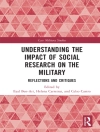Fires are a common source of exposure to smoke and a range of toxicologically active chemicals. Providing a complete overview of the subject, this book provides comprehensive and detailed information on combustion processes, estimation of rate of production of combustion products, dispersion of these products and their effects on health.
Beginning with a chapter discussing the chemistry of combustion and detailing the mechanisms of burning, how different materials ignite and the nature of combustion products, the book goes on to examine specific combustion products in detail, the toxicity and carcinogenicity of the products, their dispersion and methods of monitoring.
With diverse coverage edited and authored by recognised experts in the field, this book will provide an essential text for those working in toxicology, combustion science, public health and environmental research.
Tabela de Conteúdo
Overview of combustion toxicology;
Fire types and combustion products;
Estimating yields and quantities of mass releases of toxic products from fires;
Products of combustion and toxicity from specific types of fires;
Generation, sampling and quantification of toxic combustion products;
Dispersion of fire plumes in the atmosphere;
Application of animal models and human studies to prediction of combustion toxicity in humans;
Haber’s law and its application to combustion products;
Carbon monoxide;
Hydrogen cyanide: physiological effects of acute exposure during fires;
Mechanism of action of combustion-derived nanoparticles;
Dioxins and other carcingens;
irritant gases;
Acute effects of combinations of toxicologically active substances and heat on fire victims in buildings and during exposures to outdoor smoke plumes;
Treatment of cyanide poisoning associated with fires;
Acute lung injury following inhalation of irritant products of combustion;
Health effects on groups exposed to wildland and urban fires;
Buncefield fire;
The World Trade Centre disaster;
Providing advice to those exposed to combustion products;












